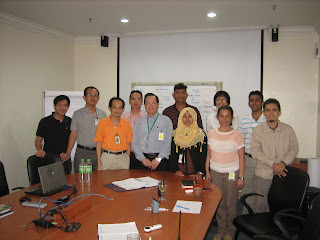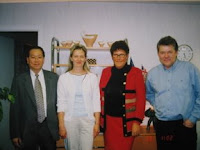Wetting Agent in Coagulant
John Woon (Senior Latex Consultant): Triton X100 is a good wetting agent but it tends to foam which might lead to weaknesses in the final products.
 You should evaluate Teric 320 (Ethoxylates of long chain aliphatic alcohols with 16 moles of ethylene oxide) or the more expensive Surfynol TG from Air Products which has the least tendency to foam. Some manufacturers are adding a small level of Surfynol TG in the coagulant tank to prevent the formation and foam and air bubbles.
You should evaluate Teric 320 (Ethoxylates of long chain aliphatic alcohols with 16 moles of ethylene oxide) or the more expensive Surfynol TG from Air Products which has the least tendency to foam. Some manufacturers are adding a small level of Surfynol TG in the coagulant tank to prevent the formation and foam and air bubbles.Another possible reason for your problem could be the wrong choice of coagulant temperature. All wetting agents used in coagulant are normally non-ionic surfactants which have a unique property – they become less soluble in water when the temperature increases. The temperature at which they become insoluble (i.e. becoming cloudy) is termed the “Cloud Point”.
Whatever wetting agent you are using, you must know the cloud point. You can determine the cloud point by doing the following:
After you have dissolved calcium nitrate in the water, add the wetting agent and mix for about 15 to 20 minutes. Do not add the detack powder.
Introduce this into a beaker and heat it on a hot plate with a magnetic stirrer. Put a thermometer in the beaker to monitor the rise in temperature while the coagulant is being heated and stirred. Once the solution becomes cloudy, take note and record the temperature. This would be the “cloud point” of your coagulant.
When the solution is allowed to cool down, it would become clear again once the temperature falls below the “cloud point”.
It is important due to the following two reason:
Assuming the “cloud point” of your coagulant is 60ºC and the actual temperature of your coagulant in your dipping line is 62ºC, the coagulant would perform as if there is no wetting agent since the wetting agent has become insoluble and therefore lost its function as a wetting agent.
Please refer to Page 20 to Page 25 of my separate report to you.
Hope this would help.




















































.jpg)
.jpg)



.jpg)
.jpg)
.jpg)
.jpg)
.jpg)
.jpg)
.jpg)
.jpg)
.jpg)
.jpg)
.jpg)
.jpg)
.jpg)
.jpg)
.jpg)
.jpg)
.jpg)
.jpg)












































